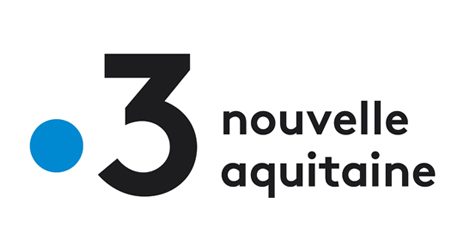[FRANCE 3] The revolution in progress of the “chameleon” pigments

Facades changing color according to the weather for energy savings, bottle labels changing when the wine is at temperature: a company from Gironde (France) has developed a new generation of “smart” pigments.
An innovation that many industrial sectors, from luxury to aeronautics, are snapping up.
Many small and medium-sized enterprises (SMEs) would love to experience the same situation as OliKrom, a young start-up based on the university campus of Pessac, near Bordeaux: since its launch in October 2014, not a day goes by without a dozen companies or industrial groups calling, interested in the innovative technology developed a few years ago by its founder, Jean-François Létard.
A chemist at the French National Center for Scientific Research (CNRS) for 17 years, the entrepreneur has specialized in “intelligent” pigments capable of reacting, by changing color, to temperature, light or pressure. From 2005 onwards, patents began to pile up, and the researcher decided to take the entrepreneurial plunge.
Business school training and a few years of incubation later, OliKrom is launched. And the industrialists came running. Because, explains Jean-François Létard, they had long been waiting for new technologies, after the first pigments capable of changing color appeared “some forty years ago”, but “they were not UV-resistant, had wear problems and could be toxic”. The processes developed by OliKrom enable “molecules to change their conformation, and therefore their color”, “with the least possible disruption”, allowing very precise modifications, whether reversible or irreversible.
The “speed” and “non-fatigability” of the process are also at the heart of the new materials, stresses the researcher.
Applications infinies
Another crucial factor in the “hypergrowth” of the young company, which has seven employees and plans to launch an industrial site by the end of 2015 thanks to a recent fund-raising round of 740,000 euros: the fields of application seem quite simply … infinite.
The luxury goods, design, decoration and fashion sectors, with their intelligent textiles, have already shown interest in the paints, varnishes, inks and plastic granules produced by the company. “We can imagine perfume bottles that change color, personalized objects”, confides Jean-François Létard, but without providing further details, concerned about confidentiality.
“This can be useful in the fight against counterfeiting, thanks to concealed markings that reveal themselves in a certain light or at a given temperature, or for food safety, thanks to barcodes that change color irreversibly when the cold chain has been broken…” says Camille Tanguy, sales manager.
Architecture and sport also offer a wide range of applications: curtains that opaque in the sun, light storage through luminescent ceilings, tennis courts that change color on impact for refereeing purposes… All the more so as the “combinations” of pigment properties seem “limitless”, stresses laboratory manager Clément Chatelier.
But one of the most far-reaching fields of application for this technological revolution is undoubtedly industrial safety. OliKrom is already working with the Airbus and Safran groups on the parts that will equip tomorrow’s aircraft, because, for maintenance, “one of the challenges is to be able to see quickly if a part has suffered an abnormal shock”. In factories, traces of wear on equipment can likewise be “visually inspected”.
We can also imagine a reduction in accidents at work or in the home by changing the color of tools or utensils subjected to high temperatures, or changing the color of safety doors in the event of fire.
And what about the possibilities opened up by pigments capable of reacting to the presence of gases or solvents, on which the company is continuing its research?
“The market is huge, and other companies are going to jump on board,” predicts Jean-François Létard, who is delighted that this innovative technology is French, while emphasizing the importance of the ecosystem of public support that has enabled him to develop his project. And, like his “chameleon” pigments, he has no difficulty in making the transition from researcher to entrepreneur.

